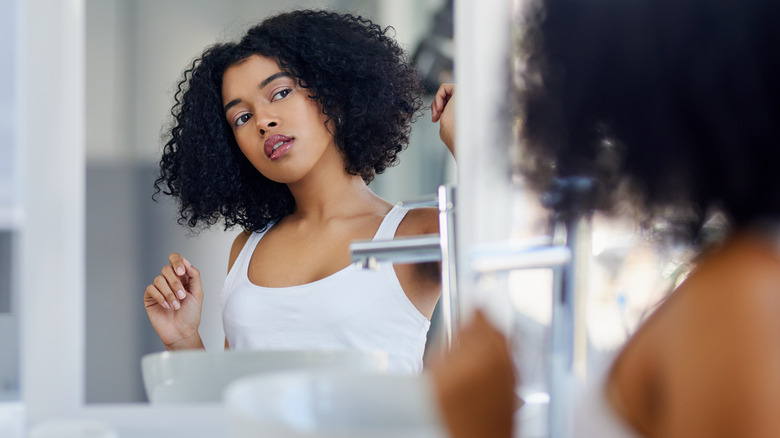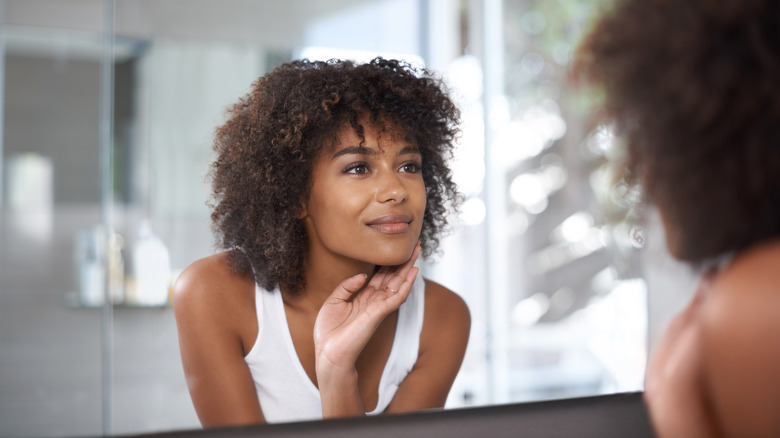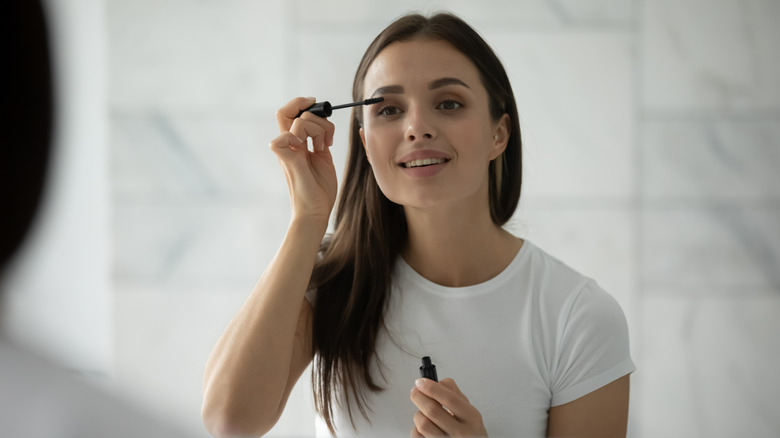High Vs. Low Visual Weight: What's The Difference, And Does It Affect Your Makeup Routine?
If you've been finding yourself tilting your head at TikTok's latest line of discourse, you're not alone. The concept of visual weight isn't exactly self-explanatory. In fact, it doesn't have anything to do with one's weight at all. In the beauty context, visual weight refers to the size of your face and the arrangement of its features, rather than its "weight" or fullness. This is something we should all get to know about ourselves, the way we know our body type, undertones, and face shape — all of it helping us to feel more confident in how we dress and accessorize for our unique features.
TikTok has been discussing visual weight — high and low visual weight, specifically — as a way to educate people on what type of makeup most flatters their faces. Is it full glam or a soft glam look that suits you the best? What techniques highlight your best features? Should you focus on contouring, or should you go for a light bronze only? Do you need to fill in your eyebrows, or just throw on some clear brow gel? Well, knowing your visual weight might just provide an answer to all of your makeup questions, at least according to BeautyTok. To illustrate the theory, think of high visual weight as prominent features on small faces (Kendall Jenner, for instance), and low visual weight as subtle features on bigger faces (like Selena Gomez). Although there is some controversy regarding visual weight, some experts suggest that certain makeup styles favor different visual weights, while others are opposed to the idea.
How to identify your visual weight
Visual weight has been described in many ways, but it all boils down to people's unique facial features and how they fill their faces. In other words, visual weight speaks to the lightness or starkness of someone's features.
As Beauty TikToker Arlisia words it, "if you have a big face and smaller features ... you're most likely a low visual weight." And vice versa: "If you have a small face with bigger, pointier features ... you're most likely a high visual weight." Makeup artist Holly Harnwell makes spotting high and low visual weight seem easy. High visual weight equals prominent features, like those of Angelina Jolie. "She has big eyes, high cheekbones and big lips. These features really stand out on her face," she told Refinery29. And for low visual weight, Harnwell points to Hailey Bieber's less pronounced facial features. "She's still just as beautiful, yet her features are just a bit more soft. Her eyes, nose, cheeks and lips aren't super prominent compared to the rest of her face," she says.
According to this logic, people whose visual weight is low tend to benefit from more natural-looking makeup, and those with high visual weight look better with heavier glam. For example, Angelina Jolie looks flawless as she sports full-glam on any red carpet. And Hailey Bieber, true to her visual weight, is known for her barely-there makeup looks and two-dots of concealer approach.
Is there truth to the theory?
You might be wondering how much validity there is to the widespread theory. While most of those weighing in on social media are not experts on the matter, there are some professionals out there willing to let their opinions be known — and their advice suggests that though the trend can be useful, it is mostly misleading.
First things first, visual weight should be considered a guide, not a strict rule. New York makeup artist Ehlie Luna told Nylon that the theory should serve only as a starting point in your journey to more flattering makeup, and not be followed religiously. Other beauty experts do use the theory as a guide, with Jess Todryk suggesting to the website that people who naturally boast sharp (that is, prominent) cheekbones "carve those babies out."
Other experts are strictly opposed, adamant that the theory isn't to be trusted. "I don't think this trend is accurate," Holly Harnwell admits to Refinery29, arguing that the makeup you do depends on the features you're working with, and not their prominence on your face. An example of this, for instance, is the cat eye versus puppy eyeliner, each of which looks best on upturned and downturned eyes respectively, relying little (or not at all) on how stark the eyes appear.


